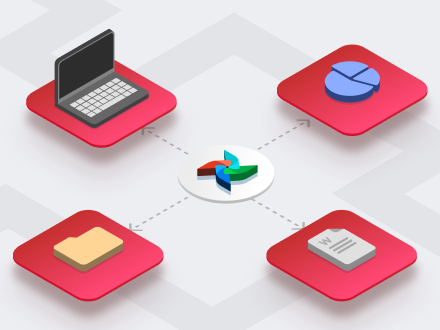Belangrijkste gebruiksscenario's van gegevensanalyse voor risico's en verzekeringen
Dit is hoe gegevens worden toegepast in de hele verzekeringswaardeketen - dagelijks, stilletjes en met grote impact.
Risicobeoordeling en prijsstelling
Vergeet brede categorieën. De verzekeraars van vandaag stellen dynamische risicoprofielen op aan de hand van historische gegevens, realtime gedrag en zelfs onconventionele signalen zoals sociale media-activiteit, koopgedrag of satellietbeelden voor vastgoeddekking. Het resultaat? Precisieprijzen die het werkelijke risico weerspiegelen.
Opsporing van fraude
Moderne fraudeanalyses gaan dieper dan op regels gebaseerde systemen. Het combineert gestructureerde gegevens (claimgeschiedenis, providergegevens) met ongestructureerde input (claimverhalen, gedragspatronen) om afwijkingen in een vroeg stadium aan het licht te brengen. Text mining, anomaliedetectie en het vergelijken van gegevens van derden signaleren nu fraude voordat het uw reserves aantast.
Telematica in autoverzekeringen
Real-time gegevens van GPS-apparaten en sensoren helpen autoverzekeraars te begrijpen hoe een voertuig wordt bestuurd, niet alleen wie het bestuurt. Dit omvat acceleratie, remmen, kilometerstand en zelfs telefoongebruik achter het stuur. De beloning? Gepersonaliseerde premies, snellere afhandeling van claims en minder geschillen.
Klantsegmentatie
Met analytics kunnen verzekeraars verder gaan dan demografische gegevens en klanten segmenteren op basis van gedragskenmerken, levensfasen, digitale gewoonten en meer. Dat betekent dat marketing, productontwerp en ondersteuning op maat kunnen worden gemaakt, niet alleen gericht. Het is het verschil tussen een polis aanbieden en relevantie bieden.
Automatisering van claimverwerking
Automatisering zorgt nu voor het grootste deel van de eerste verwerking van claims: gegevensvalidatie, controles op inconsistenties en berekeningen van schikkingen. Analytics verbetert de nauwkeurigheid en markeert verdachte claims voor nader onderzoek, zodat menselijke experts zich kunnen bezighouden met randgevallen.
Underwriting verbetering
De tijd dat acceptatie alleen gebaseerd was op leeftijd en statische tabellen is voorbij. De huidige verzekeraars voeren verschillende datasets in AI modellen in - van EHR's tot kredietgedrag en rijgegevens - en genereren risicoscores die voortdurend worden bijgewerkt. Het is dynamisch, niet vast. En het weerspiegelt veel beter het echte risico.
Klantervaring personaliseren
Polishouders worden niet langer behandeld als dossiers. Met analytics kunnen verzekeraars proactief behoeften identificeren, op verloop anticiperen en op het juiste moment waarde bieden, of het nu gaat om een dekkingsherinnering, productupgrade of korting op basis van levensstijl. Denk aan CX met context.
Voorspellende analyses
Van het identificeren van klanten die waarschijnlijk dure claims gaan indienen tot het detecteren van klanten die op het punt staan om hun verzekering te beëindigen, voorspellende modellen laten verzekeraars een stap voor blijven. Deze proactieve houding verbetert de retentie, wijst middelen effectiever toe en helpt langdurige relaties op te bouwen.
Catastrofe modellering
Natuurrampen zijn altijd onvoorspelbaar geweest, maar de frequentie en intensiteit ervan nemen toe. Daarom combineert analytics nu realtime klimaatgegevens, satellietgegevens en kaarten van stedelijke ontwikkeling om het risico op rampen op specifieke locaties te modelleren voordat ze zich voordoen. Dit is de toekomst van verzekeren voor klimaatvolatiliteit.
Gezondheids- en welzijnsprogramma's
Verzekeraars werken nu samen met werkgevers en polishouders om gezondheidsresultaten te verbeteren. Analytics van wearables, wellness check-ins en schadehistorie maken preventieve zorg, risicostratificatie en flexibelere beleidsopties op basis van gezondheidsprofielen mogelijk.
Schaderegeling optimaliseren
Schadesystemen op basis van analytics kunnen voorspellen of een claim geldig is, hoe lang het zal duren om op te lossen en hoe groot de kans is dat de claim escaleert. Dit helpt verzekeraars om prioriteiten te stellen, rechtszaken te voorkomen en zowel de uitbetalingstermijn als de overhead te verkorten.
Cyberbeveiliging en digitale risico's
Verzekeraars verzekeren nu cyberrisico's met behulp van analyses die rekening houden met IT-infrastructuur, bedreigingen in de sector en risico-indicatoren op basis van gedrag. Aan de andere kant gebruiken ze dezelfde tools om hun eigen activiteiten te beschermen: het opsporen van verdachte toegangspatronen, misbruik van credentials of anomalieën in gebruiksgegevens.
Fraudepreventie in de gezondheidszorg
Fraude in de gezondheidszorg is complex en vaak heimelijk. Analytics signaleert patronen die geen enkel handmatig systeem kan ontdekken (dubbele facturen, spookclaims, opgeblazen servicevolumes of verkeerd afgestemde diagnoses) en initieert automatisch onderzoeksworkflows.
Taxatie van onroerend goed
Datamodellen bevatten nu informatie over locaties, bouwmaterialen, schadefrequentie en zelfs lokale infrastructurele ontwikkelingen om vastgoed in realtime te kunnen taxeren. Geen verouderde taxaties of onder-/oververzekeringsrisico's meer.
Productontwikkeling
Verzekeraars gebruiken eindelijk gegevens om polissen te ontwerpen die mensen echt willen. Door schadegegevens, gebruikspatronen, opkomende risico's en gedragssignalen te verzamelen, kunnen ze producten ontwikkelen voor microsegmenten en onderbediende niches identificeren. Het doel is niet volume, maar precisie.


























